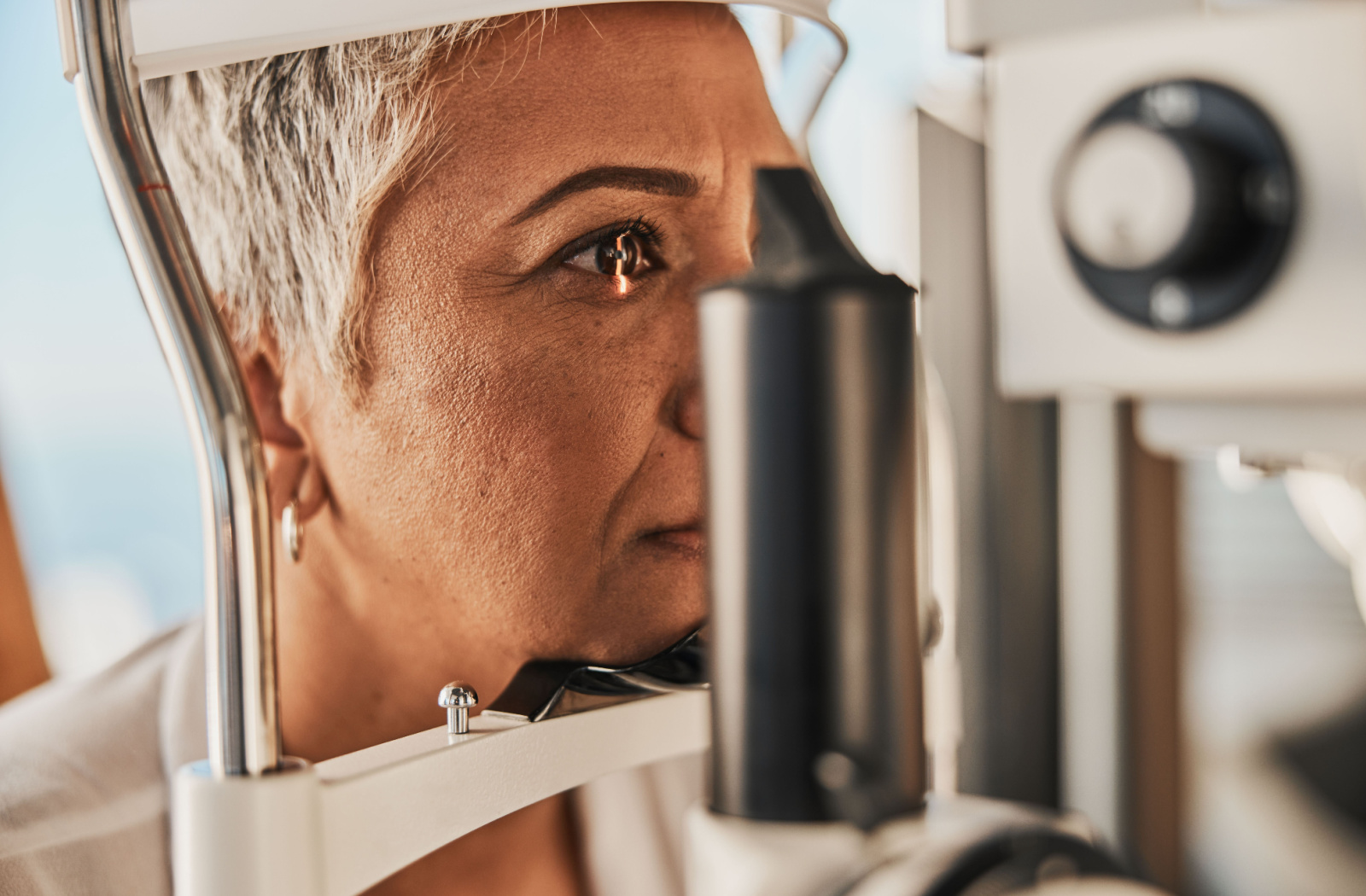Your eyes are your windows to the world, and like any window in your home, you want to keep them nice and clear so you can see all that’s out there. But eye diseases like glaucoma can fog your windows and eventually lead to permanent vision loss if left untreated. They don’t call it the “silent thief of sight” for no reason—many people experience no symptoms in its early stages.
Fortunately, optometrists are trained to diagnose and treat glaucoma, and regular eye exams can uncover it before it causes significant damage. Optometrists can diagnose glaucoma by examining your peripheral vision, taking images of your option nerve, and measuring your eye’s internal pressure, an early glaucoma sign.
What Is Glaucoma?
You may be surprised to learn that glaucoma isn’t a single condition, but a group of eye diseases that damage the optic nerve. The optic nerve carries information from your eyes to your brain, like a wire carrying a picture to your TV. If the wire gets damaged, you can lose the image. If your optic nerve gets damaged, you can lose your vision.
How the nerve gets damaged brings us to the types of glaucoma. When people discuss glaucoma, they’re usually referring to the types that come with an increase in fluid pressure inside the eye, referred to as intraocular pressure (IOP). While glaucoma can happen in many ways, there are 4 major types:
Open-Angle Glaucoma
Open-angle glaucoma is the most common type of glaucoma. It develops gradually, and you may not realize you have it until the damage is done and the symptoms finally show up. In open-angle glaucoma, the eye’s drainage canals are open and ready to move fluid out of the eye, but the problem is somewhere deeper in the system.
The fluid pressure in the eye builds up over time, causing damage to the optic nerve. One of the first symptoms of open-angle glaucoma could be a gradual loss of peripheral vision. As the disease progresses, you may also experience tunnel vision and eventually lose your sight.
Angle-Closure Glaucoma
Angle-closure glaucoma occurs when the iris (the colored part of the eye) is too close to the eye’s drainage system. This can cause a rapid increase in IOP as the fluid has nowhere to go. Angle-closure glaucoma is rare, but it can develop suddenly and is considered a medical emergency.
While open-angle glaucoma can sneak up on you, angle-closure can show itself fast, and you may notice symptoms like:
- Headaches
- Eye pain
- Nausea
- Rainbows around lights at night
- Sudden and intense blurred vision
Normal-Tension Glaucoma
As if we thought glaucoma couldn’t get any sneakier, normal-tension glaucoma occurs when the optic nerve is damaged even though the fluid pressure in the eye is within the normal range. Doctors aren’t sure what causes normal-tension glaucoma, and there’s some debate about whether it’s simply another form of open-angle glaucoma.
Your optometrist can still diagnose normal-tension glaucoma by examining your optic nerve for abnormalities.
Secondary Glaucoma
Secondary glaucoma can be linked to another identifiable source of increased eye pressure, such as:
- Medications
- Surgery
- Other medical conditions, such as diabetes
- Eye injury
Diagnosing Glaucoma
The first step in diagnosing glaucoma is a comprehensive eye exam. Your optometrist can run a series of tests to look for signs of glaucoma, typically before you suspect you may ever have it. This proactive care lets us get the jump on effective treatments, such as eye drops or, in rare cases, laser treatment or surgery to assist in drainage.
Tonometry
Since most types of glaucoma affect your IOP, it makes sense to start there. Tonometry measures the eye’s internal pressure to see if it falls within a normal range. Your optometrist can perform this using an air puff test or a gentle plunger or light probe.
Peripheral Vision Test
Glaucoma typically affects peripheral vision first, so a visual field test can check for any blind spots at the edge of your vision. This can reveal early signs of the disease before any noticeable symptoms occur. During this test, you’ll be asked to look straight ahead into a screen and indicate when you see dots of light appearing in your peripheral vision.
Optic Nerve Imaging
However, imaging technology allows us to get a new view on things. Optical coherence tomography (OCT) is a noninvasive test that uses light waves to take pictures of the retina. The images OCT produces show the thickness of the retina and help identify any changes that may indicate glaucoma.
How to Know if You’re at Risk of Glaucoma
While anyone can develop glaucoma, certain factors can make you more at risk:
- Being over 40
- Genetics
- A family history of glaucoma
- Medical conditions, such as diabetes, high blood pressure, and heart disease
- Eye injuries
- Having thinner corneas
- Conditions like retinal detachment, eye inflammation, or eye tumors
- Use of corticosteroids
Let your optometrist know if you have any of these factors. We can start testing for glaucoma at your next eye exam.

Stay Ahead of Glaucoma with The Vision Place
While glaucoma is a serious eye condition, early detection and treatment can help prevent permanent vision loss. At The Vision Place, our team is skilled in diagnosing and treating with innovative tools to test the optic nerve. Be proactive about your eye health and book your eye exam today. Your eyes are worth it!


